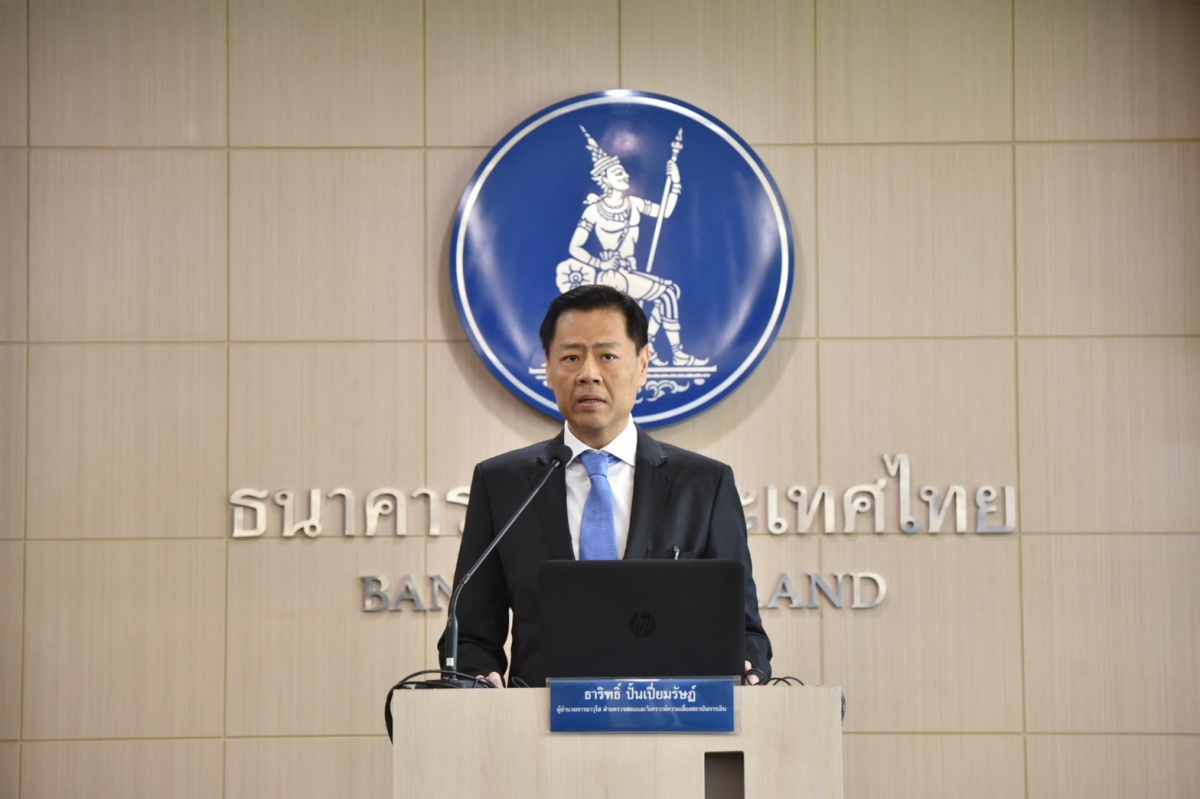Performance of the Thai Banking System in 2019

Mr. Tharith Panpiemras, Senior Director, Banking Supervision and Risk Assessment Department, Bank of Thailand, reported on the Thai banking system’s performance in 2019 that the Thai banking system remained resilient with high levels of capital fund and loan loss provision to withstand a potential adverse impact from economic uncertainty. Banking system’s performance improved mainly from gains on extraordinary items. Meanwhile, bank loan growth and loan quality were negatively affected by economic slowdown. Details are as follows:
Capital fund of the Thai banking system was at 2,845 billion baht, increased from profit appropriation, a medium-sized bank’s new share issuance to support its merger and issuance of subordinated bonds, raising capital adequacy ratio (BIS ratio) to 19.6%. Loan loss provision increased by 32.4 billion baht from last year to 701.2 billion baht. NPL coverage ratio was stable at 149.9%. Liquidity coverage ratio (LCR) remained high at 187.5%.
The banking system recorded net profit of 270.9 billion baht in 2019, up 30.8% compared to last year, mainly due to the recognition of extraordinary items from gains on sales of investment. Net interest income increased in line with the growth in retail lending. Meanwhile, net fee income slightly declined from lower fee-based income from fund transfer and securities brokerage. Overall, the return on asset (ROA) increased from 1.11% last year to 1.39% , while the ratio of net interest income to average interest-earning assets (Net Interest Margin: NIM) remained stable at 2.73%.

Bank loans exhibited lower rate of growth in 2019 at 2.0% year-on-year. Details of bank loan growth are as follows: Corporate loans (64.1% of total loans) contracted by 0.8% from last year consequent to subdued economic conditions and loan repayment by several businesses. Large corporate and SME loan growth (excluding financial business) contracted by 1.9% and 2.1% respectively. However, loans to small-sized enterprises (with credit line up to 20 million baht) expanded in various business types, namely wholesale and retail sales, as well as food and beverage, particularly in the second half of 2019.
Consumer loans (35.9% of total loans) expanded at 7.5% year-on-year with slower growth in mortgage lending and auto loans. However, personal loans and credit card loans continued to grow at high level.
On the loan quality front, the gross non-performing loans (NPLs) outstanding stood at 465 billion baht, equivalent to 2.98% of total loans. This was attributed to loan quality management through debt write-off and debt restructuring. The ratio of special mention loans (SMs) to total loans increased from 2.42% last year to 2.79% from both corporate and consumer loans.
ลงทะเบียนเข้าสู่ระบบ เพื่ออ่านบทความฟรีไม่จำกัด






